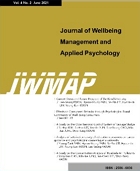- 권한신청
- E-ISSN2586-6036
- KCI
A Study on the Optimization of High-Concentration Ammonia Nitrogen Chemical Treatment Process
Su-Hye KIM (Department of Environmental Health & Safety, Eulji University)
Woo-Taeg KWON (Department of Environmental Health & Safety, Eulji University)
Abstract
Purpose: High concentrations of nitrogen exist in food wastewater, and when nitrogen is not properly treated and discharged, it can cause eutrophication in the aquatic ecosystem. Research design, data and methodology: In order to remove nitrogen using sodium hypochlorite, the BNCR tank was designed and installed in the step behind the biological treatment tank, and the data of pH, TOC, and T-N were collected after about a month of demonstration. Results: As a result of operating the BNCR tank, total nitrogen decreased by about 83% on average. The total nitrogen in the second sedimentation tank before going through the BNCR tank must be removed and finally discharged after nitrogen is removed above the legal standard of 60 mg/L. Conclusions: If BNCR tank is added to the process currently applied to nitrogen removal and operated, ammonia nitrogen can be removed more efficiently. However, the disadvantage is that nitric acid nitrogen and nitric acid nitrogen cannot be removed. If these disadvantages are supplemented and optimized in the future, it will be helpful for workplaces that are having difficulty removing nitrogen.
- keywords
- Food Wastewater, Ammonia Nitrogen, BNCR Tank, Nitrogen Removal
- 다운로드 수
- 조회수
- 0KCI 피인용수
- 0WOS 피인용수














